14 new trees discovered in the UK and Ireland
- Sorbus x motleyi
A new hybrid known only from one site near Merthyr Tydfil, where just two young trees are known.
- Sorbus stirtoniana
About 40 trees can be found on the cliffs of Craig Breidden, Montgomeryshire.
A hybrid between the Common Whitebeam and the Bristol Whitebeam. The only one example can be found on a cliff in the Avon Gorge, inaccessible without ropes. where it was found by Ms Libby Houston (pictured) in 2005.
- Sorbus x robertsonii
A new hybrid between the Common whitebeam and the Round-leaved Whitebeam. Only one tree is known so far, but it could be widespread in South-West England.
- Sorbus scannelliana
A new species first confirmed as distinct in September 2008. Five trees are known in the Killarney National Park, County Kerry, Republic of Ireland, where it probably originated from the Rock Whitebeam crossing with Rowan.
A new species which has been known since the 1980s, but whose differences from the Grey-leaved Whitebeam has only recently been clarified using DNA. It is common at Leigh Woods on the Somerset side of the Avon Gorge, where about 100 trees are known.
Jess Gould potting on young Sorbus stirtoniana at the National Botanic Garden of Wales.
Llangollen Whitebeam, a rare tree confined to the cliffs of Eglwyseg Mountain, Denbighshire.
- Sorbus cambrensis - First found in 1874 and classed as Grey-leaved Whitebeam, biochemical studies have recently shown this to be a new species.
A new plantation of Motley's Whitebeam (Sorbus x motleyi)at the National Botanic Garden of Wales
Map showing where the new trees were found (Key: W. = Whitebeam)
Botanists at National Museum Cardiff in conjunction with scientists from Bristol University, Exeter University, Oxford University and the Royal Botanic Gardens, Kew have named new kinds of tree in Wales, England and Ireland, all of which are rare and need to be protected.
Of the 14 finds which have been named officially in Watsonia, the scientific journal of the Botanical Society of the British Isles, six occur in Wales. These are:
- Stirton's Whitebeam (Sorbus stirtoniana) which can only be found in one place in the World - on the cliffs of Craig Breidden, Montgomeryshire;
- Llangollen Whitebeam (Sorbus cuneifolia) - a rare tree confined to the cliffs of Eglwyseg Mountain, Denbighshire where about 240 plants are known;
- Welsh Whitebeam (Sorbus cambrensis) found in the Brecon Beacons west of Abergavenny and Llanthony Valley Whitebeam (Sorbus stenophylla) - two closely related species from Wales;
- Doward Whitebeam (Sorbus eminentiformis) known only from the Wye Valley in England and Wales;
- Motley's Whitebeam (Sorbus x motleyi) - a new hybrid from one site near Merthyr Tydfil, where two young trees have been discovered.
Evolution in Action
The discovery of Motley's Whitebeam is an example of evolution in action. It originated as a hybrid between Ley's Whitebeam and Rowan in a wood after one of the few remaining Ley's Whitebeams was blown down in the 1989 Hurricane. The extra light from the gap in the woodland canopy allowed seeds in the soil to germinate and grow;
These new finds, in addition to seven new types in England and one in Ireland are all members of the Sorbus group, which includes whitebeams, rowans and service trees, increasing the number of this type of tree by over 50%.
DNA discovery
Dr Rich led this project which was primarily funded by The Leverhulme Foundation and Amgueddfa Cymru - National Museum Wales, with contributions from Countryside Council for Wales, Natural England and Royal Botanic Gardens, Kew.
Some of these trees have probably developed recently and are examples of on-going evolution of new species. Others are older types which have been known for some time but are only now described as 'species' thanks to modern DNA methods.
The type specimens of the trees are held in the Welsh National Herbarium at National Museum Cardiff, and three of the Welsh species — Stirton's Whitebeam, Motley's Whitebeam and Welsh Whitebeam can be seen growing at the National Botanic Garden of Wales.
New species and hybrids
Wales
Llangollen Whitebeam - Sorbus cuneifolia
- A new species from North Wales, Llangollen Whitebeam has probably evolved from the English Whitebeam;
- The Latin name cuneifolia refers to the narrower leaf bases, its distinguishing feature from the English Whitebeam;
- It is a rare tree confined to the cliffs of Eglwyseg Mountain north of Llangollen, Denbighshire, where about 240 plants are known.
Motley's Whitebeam - Sorbus x motleyi
- A new hybrid known only from one site near Merthyr Tydfil, where only two young trees are known;
- This is an example of evolution in action. It originated as a hybrid between Ley's Whitebeam and Rowan in a wood after one of the few remaining Ley's Whitebeams was blown down in the 1989 Hurricane. The extra light from the gap in the woodland canopy allowed seeds in the soil to germinate and grow;
- It was first found in 1999 by Graham Motley of the Countryside Council for Wales when he was monitoring the very rare Ley's Whitebeam, and is named after him.
Stirton's Whitebeam - Sorbus stirtoniana
- A new species, recently recognised as different from Thin-leaved Whitebeam with which it had been confused;
- About 40 trees can be found on the cliffs of Craig Breidden, Montgomeryshire;
- It has been named in honour of Prof. Charles Stirton in recognition of his inspirational work establishing the National Botanic Garden of Wales;
- Trees are held in cultivation at the Gardens.
Welsh Whitebeam - Sorbus cambrensis and Llanthony Valley Whitebeam - Sorbus stenophylla
- Two new, closely related species from Wales;
- Biochemical studies have shown these species differ from each other and from the more widespread Grey-leaved Whitebeam, within which they were formally included;
- About 100 plants of the Welsh Whitebeam are known from the eastern Brecon Beacons west of Abergavenny;
- The Llanthony Valley Whitebeam was first found in 1874 by the Rev. Augustin Ley;
- There are probably about 100-200 plants in the Llanthony Valley.
England
Avon Gorge Whitebeam - Sorbus x avonensis
- A hybrid between Common Whitebeam and Grey-leaved Whitebeam;
- It was first found by Dr Tim Rich, Ashley Robertson and Libby Houston whilst studying whitebeams in the Avon Gorge in 2004;
- It has only so far been confirmed for the Avon Gorge in Bristol, but may occur locally in South-west England where the parents grow together.
Houston's Whitebeam - Sorbus x houstoniae
- A hybrid between the Common Whitebeam and the Bristol Whitebeam;
- The only one example can be found on a cliff in the Avon Gorge, where it was found by Ms Libby Houston in 2005 which makes it inaccessible without ropes.
Leigh Woods Whitebeam - Sorbus leighensis
- A new species which has been known since the 1980s, but whose differences from the Grey-leaved Whitebeam has only recently been clarified using DNA;
- It is common at Leigh Woods on the Somerset side of the Avon Gorge;
- About 100 trees are known.
Margaret's Whitebeam - Sorbus margaretae
- Related to the Rock Whitebeam and the Bloody Whitebeam;
- It was first recognised as a distinct species by Margaret E. Bradshaw during her surveys of the rare Whitebeams of South-west England in 1984, and it is named after her.
- It occurs only on the cliffs along the north coast of Devon and Somerset, where at least 120 trees are known.
No Parking Whitebeam - Sorbus admonitor
- The No Parking Whitebeam was first noted to be different from the more widespread Devon Whitebeam in the 1930s, but has only recently been demonstrated to be a different species using biochemical analyses;
- The name originates from the time in the 1930s when a ‘No Parking' notice was nailed to a tree by a small layby at Watersmeet in North Devon.
- It is common to the Watersmeet area of North Devon where there are at least 110 trees.
Proctor's Rowan - Sorbus x proctoris
- A new hybrid between Rowan and Sichuan Rowan;
- It is named after Dr Michael Proctor, an eminent senior botanist of Exeter University, for his excellent work on British Whitebeams;
- Only one tree has been found in the wild in the Avon Gorge, where there is a nature conservation dilemma. As one of its parents is a garden tree from China, there is the potential for genes of the Sichuan Rowan to spread into the native rowan population in the Avon Gorge. To prevent this happening, one option would be to destroy/remove the only example of this tree!
Robertson's Whitebeam - Sorbus x robertsonii
- A new hybrid between the Common whitebeam and the Round-leaved Whitebeam;
- Only one tree is known so far, but it could be widespread in South-West England;
- It was first found by Dr Tim Rich, Ashley Robertson and Libby Houston whilst studying whitebeams in the Avon Gorge;
- It is named after Dr Ashley Robertson for his outstanding work in clarifying the evolution of the whitebeams in the Avon Gorge.
Wales & England
Doward Whitebeam - Sorbus eminentiformis
- A new species, known only from the Wye Valley in England and Wales.
- The total population is probably under 100 trees, most of which occur on the Great Doward.
Ireland
Maura Scannell's Whitebeam - Sorbus scannelliana
- A new species first confirmed as distinct in September 2008;
- Five trees are known in the Killarney National Park, County Kerry, Republic of Ireland, where it probably originated from the Rock Whitebeam crossing with Rowan;
- It is named after one the great Irish botanist Maura Scannell, formerly of the National Botanic Gardens Glasnevin, whose knowledge of Irish botany is unrivalled.
References:
- Rich, T. C. G. & Proctor, M. C. F. (2009). Some new British and Irish Sorbus L. taxa (Rosaceae). Watsonia 27: 207-216.
- Rich, T. C. G., Harris, S. A. & Hiscock, S. J. (2009). Five new Sorbus (Rosaceae) taxa from the Avon Gorge, England. Watsonia 27: 217-228.

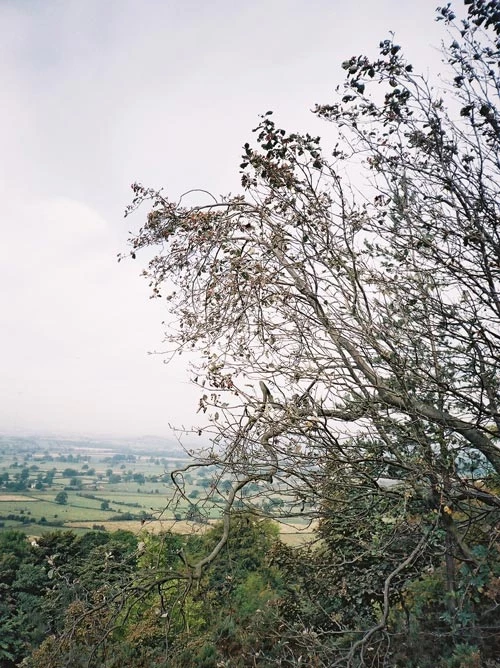


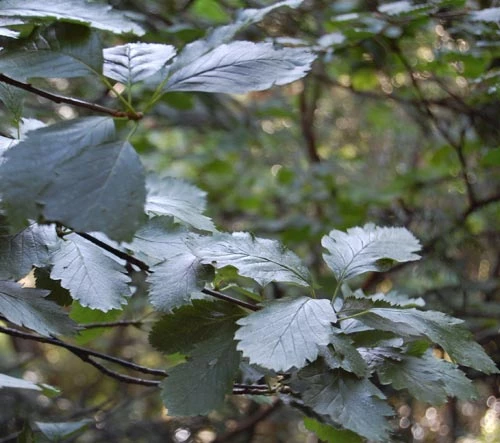
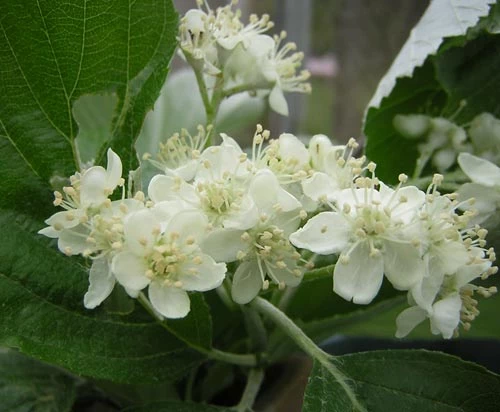
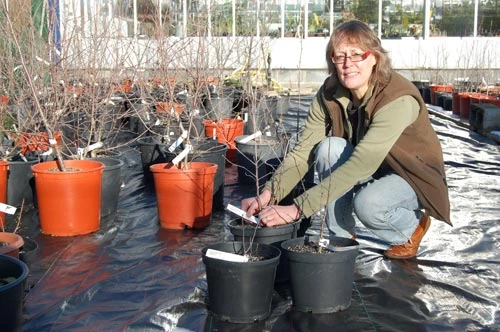

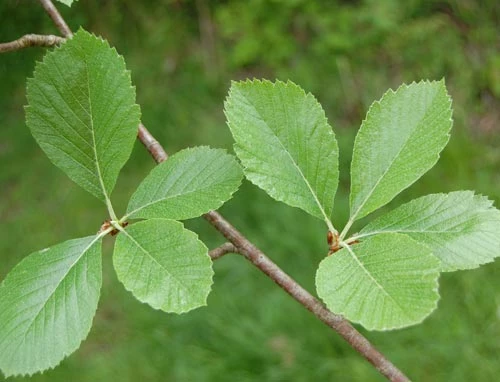

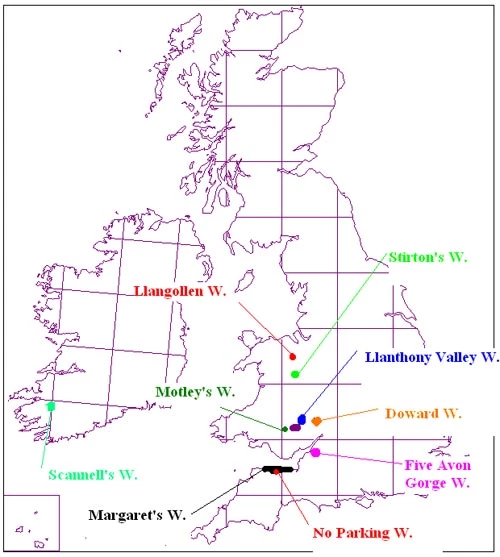
Comments - (1)